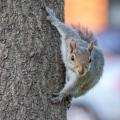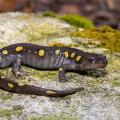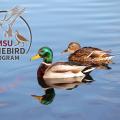Food Plots
Planting wildlife food plots is a common practice, especially for white-tailed deer. Many landowners or club members believe that a properly managed habitat and deer herd includes planted food plots. While the contribution of supplemental plantings to deer management should not be overlooked, more benefit can be realized through manipulation of native habitat. Practices such as well-timed prescribed burning of pine forests or proper timber harvesting techniques will provide abundant, high-quality forage and cover for deer at little or no cost to the landowner.
Consistently productive food plots require careful thought and planning before they are implemented. Factors to consider include the following.
- Location:
Plots should be located on fertile soils with adequate drainage. Cover should be located nearby or scattered across the plot. Food plots should not be established near a public road or waterway due to the increased possibility of poaching.
- Size:
Plot size and shape may vary with local conditions, but to provide adequate sunlight to meet forage production requirements generally should not be less than one acre.
- Spacing:
Plots should be scattered over the entire property if possible. It is more beneficial to establish 10 plots 2 acres in size than to have a single 20acre field. Cost may dictate total acreage planted.
- Soil Testing:
To ensure productive food plots conduct soil tests for fertilization and lime requirements. The local county agent (MSU-Extension Service office) can provide information on soil sample collection and where to send them for analysis. Be sure list the potential crops to be grown when sending in soil samples for testing.
- Planting:
Be sure to select a plant species or combination of species that will grow on the particular soil type and site that you have. If unsure, ask the county agent, wildlife biologist, or local seed supplier. Proper seedbed preparation will increase germination and yield more productive food plots. Plant crops at the prescribed seeding rate and during the proper planting season. It is critical that legume seeds (clovers, peas, beans) be inoculated with nitrogen fixing bacteria before planting.
Food Plots Publications
Publications
News
Have you ever been on a walk in the woods, park, or backyard and noticed animal tracks in the mud or dirt?
The yellow-spotted salamander is a slippery, shiny Mississippi amphibian. Also known as Ambystoma maculatum, this is a large amphibian, measuring between six to nine inches!
Have you ever been on a walk in the woods, park, or backyard and noticed animal tracks in the mud or dirt? Some tracks are easy to identify, while others are a bit harder to tell which animal they belong to.
Success Stories
These are just a few of Mississippi’s gamebirds, and the Mississippi State University Extension Service recently launched a new social media space to support gamebird recreation and management.
In late February, Mississippi State University hosted the 2024 National Floriculture Forum, an annual conference held at different locations around the country.
A Smithsonian Institution exhibit about rural communities continues its journey in public libraries across Mississippi.











